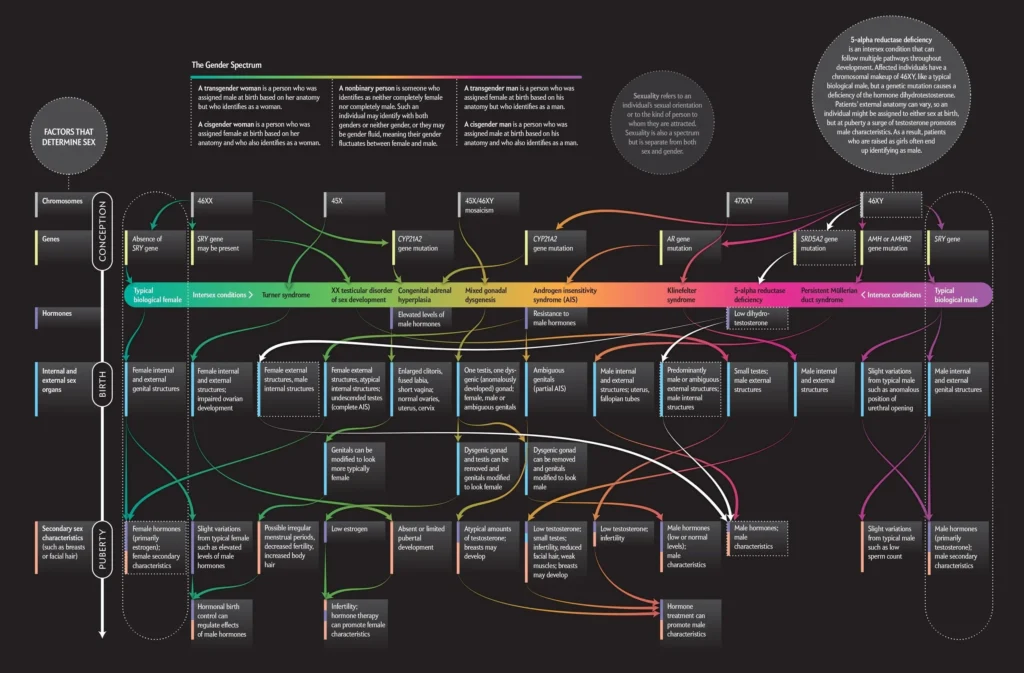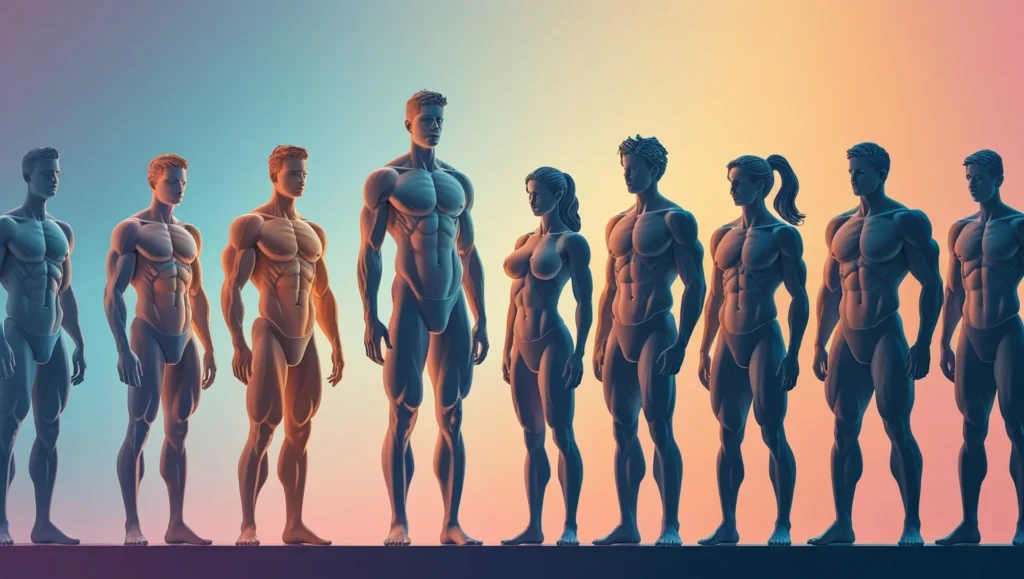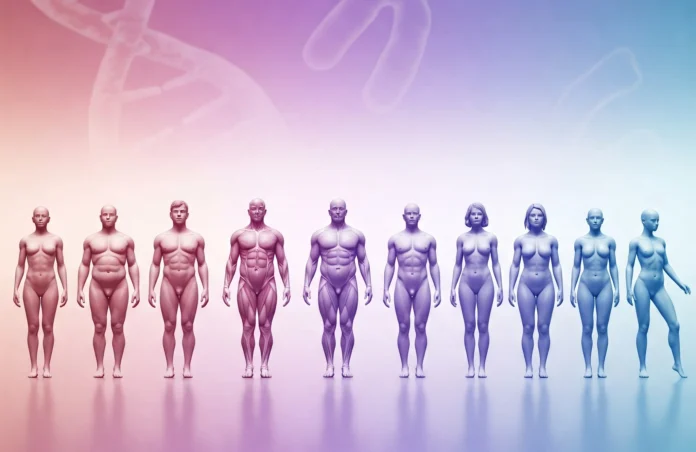Understanding the Complexity of Biological Sex
Biological sex is not as simple as male or female. It involves a range of genetic, hormonal, and developmental factors that do not always fit neatly into a binary classification. Scientific research has demonstrated that biological sex exists on a spectrum, rather than in rigid categories. Furthermore, scientific advancements in genetics and endocrinology continue to reveal new complexities in human biology that further support the idea of sex existing beyond a binary framework. These discoveries underscore the diversity found in nature, challenging traditional views and necessitating a broader understanding of sex in biological and social contexts.
Here are seven critical scientific insights that challenge the traditional binary definition of biological sex and highlight the complexity of human biology.
1. Sex Development Is a Multifaceted Process
Sex determination is not solely dictated at conception. Instead, it involves multiple stages of development, including genetic, hormonal, and environmental influences. These influences may act at different times throughout an individual’s life, from embryonic development to puberty and beyond. Factors such as gene expression, mutations, and epigenetic mechanisms play significant roles in shaping sexual characteristics.
According to Sam Sharpe, an evolutionary biologist at Kansas State University, “Sex is a multifaceted trait with components present at birth and others that develop during puberty.” This means that traits typically associated with male or female biology do not emerge simultaneously or uniformly across individuals. Additionally, some traits associated with one sex may be present in varying degrees in individuals who are typically categorized as the opposite sex, further complicating strict binary definitions. As more research unfolds, it becomes clear that no single trait alone determines an individual’s biological sex.
2. Gametes Do Not Define an Individual’s Sex
A widely debated executive order defined biological sex based on reproductive cell size: males produce small sperm cells, while females produce large egg cells. However, this definition is problematic because not everyone produces gametes.
Some individuals have genetic conditions that prevent them from making sperm or eggs. What does that mean for people who don’t have gametes? As Sharpe points out, a definition that excludes individuals who cannot produce reproductive cells is inherently flawed. Moreover, modern medical interventions such as hormone therapies and fertility treatments further complicate gamete-based definitions of sex, as some individuals may gain or lose the ability to produce gametes at different points in their lives. This further emphasizes that biological sex cannot be strictly defined by reproductive capabilities alone.
3. Sex Chromosomes Vary Beyond XX and XY

Traditionally, sex chromosomes are categorized as XX (female) and XY (male), but variations exist. Sex determination is more complex than a simple chromosomal blueprint.
- Turner syndrome: Individuals with a single X chromosome (XO) do not develop functional ovaries.
- Klinefelter syndrome: Males with an extra X chromosome (XXY) often have reduced fertility or do not produce sperm.
- Androgen insensitivity syndrome: Individuals with XY chromosomes may develop as female due to the body’s inability to respond to male hormones.
- XX male syndrome: Individuals with two X chromosomes can develop male characteristics due to the presence of specific genetic factors.
- Mosaicism and chimerism: Some individuals have different sets of chromosomes in various cells, further complicating simplistic sex classifications.
Nathan Lents, a molecular evolutionary biologist, explains, “If you define biological sex purely on gametes, you’re ignoring much of what actually matters to daily life.” Additionally, research into sex chromosome abnormalities continues to reveal previously unknown variations that further undermine a strict binary classification of sex.
4. Intersex Individuals Are More Common Than You Think
Intersex individuals make up approximately 1.7% of the population—a frequency similar to naturally occurring red hair. These individuals may have a mix of male and female biological traits, challenging the notion that sex is strictly binary.
Some intersex individuals are born with both ovarian and testicular tissue. Others may not discover their intersex traits until later in life, such as during fertility treatments. Research indicates that medical interventions in infancy have historically been used to force intersex bodies into binary classifications, often without consent, leading to long-term psychological and physical consequences.
As awareness of intersex conditions increases, medical and legal frameworks are beginning to adapt to recognize the diversity in biological sex. This shift highlights the importance of viewing sex as a spectrum rather than a strict dichotomy and fostering inclusivity for individuals who do not fit traditional classifications.
5. Sex Hormones Influence More Than Just Reproduction
Sex hormones like testosterone and estrogen play roles beyond reproduction, affecting bone density, metabolism, and even skin health. Hormone levels can also fluctuate due to environmental factors, medications, and individual genetic variations.
During fetal development, these hormones contribute to the formation of sex-specific traits. However, both males and females produce testosterone and estrogen—just in different amounts. The presence and effects of these hormones vary widely among individuals, often leading to characteristics that do not fit neatly into traditional male or female categories.
For example, conditions such as congenital adrenal hyperplasia (CAH) can result in individuals assigned female at birth developing typically male-associated traits due to excess androgen production. This further demonstrates that sex characteristics exist along a spectrum rather than in a binary state, and hormone balance can influence numerous biological functions beyond secondary sex traits.
6. Secondary Sex Characteristics Exist on a Spectrum

Height, muscle mass, and fat distribution are often associated with male and female bodies, but these characteristics do not conform to a strict binary. For example:
- Many women are taller than some men.
- Some women have higher testosterone levels than the average man.
- Men and women both have breast tissue, and some men develop enlarged breasts due to hormonal imbalances.
These variations demonstrate that even secondary sex traits fall along a spectrum rather than fitting neatly into two separate categories, reinforcing the complexity of human biology.
7. Environmental and Social Factors Affect Sex Expression
Beyond genetics and hormones, environmental and social factors can influence how biological sex traits are expressed. Studies have shown that factors such as nutrition, stress, and exposure to certain chemicals can affect hormone levels and reproductive development.
Additionally, medical interventions, such as hormone replacement therapy, gender-affirming treatments, and even surgeries, further demonstrate that sex is not an unchanging, binary trait but a complex and adaptable aspect of human biology.
Final Thoughts: Why a Binary Definition of Sex Falls Short
The biological definition of sex cannot be reduced to a single characteristic like chromosomes, reproductive organs, or gametes. Science supports a more nuanced view—one that accounts for the natural diversity in human biology.
By embracing a more comprehensive understanding of biological sex, society can foster greater acceptance and respect for all individuals, regardless of where they fall on the spectrum. Recognizing biological diversity allows for more accurate medical, scientific, and social frameworks that reflect reality rather than outdated, oversimplified definitions.


